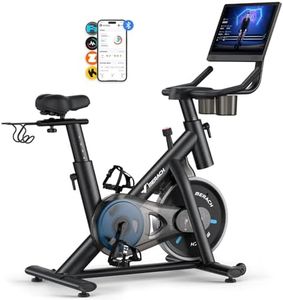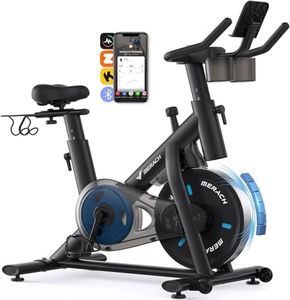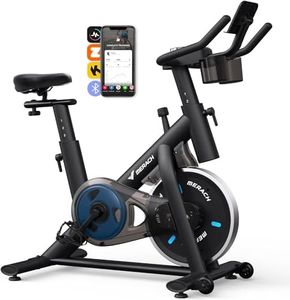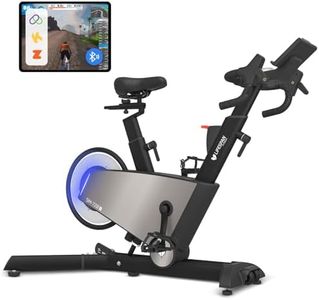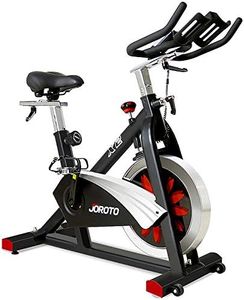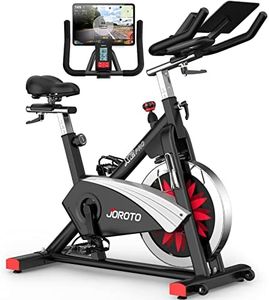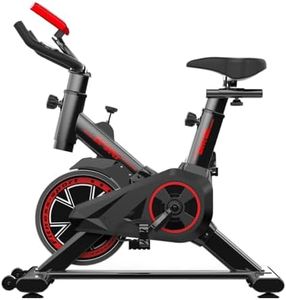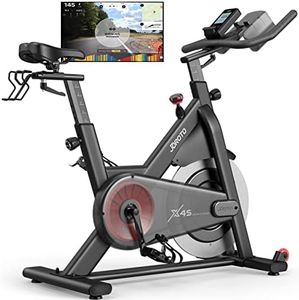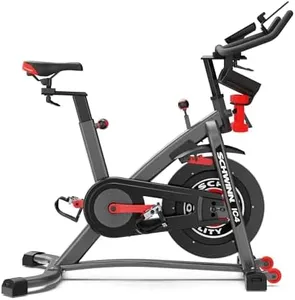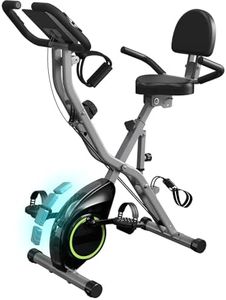We Use CookiesWe use cookies to enhance the security, performance,
functionality and for analytical and promotional activities. By continuing to browse this site you
are agreeing to our privacy policy
10 Best indoor spin bikes
From leading brands and best sellers available on the web.Buying Guide for the Best indoor spin bikes
Choosing the right indoor spin bike is about matching the bike’s features to your exercise goals, comfort, available space, and preferred style of use. Start by asking yourself what type of workouts you plan to do, how often you’ll use the bike, and what makes you feel comfortable when riding. Always check the adjustability and try to imagine using the bike for your longest workout sessions. Remember, the best indoor spin bike for you isn’t always the one with the most features, but the one that fits best with your needs and lifestyle.Flywheel WeightThe flywheel is the large wheel at the front or back of the bike that spins as you pedal. Its weight affects how smooth and realistic your ride feels. Heavier flywheels (often 30 lbs and above) provide a smoother, more stable pedaling experience and can feel more like riding a real bike, which is popular for intense, regular workouts. Lighter flywheels (15–30 lbs) are easier to start and stop, making them a good choice if you prefer shorter sessions, less intense workouts, or need a lighter bike for moving and storage. To pick the right flywheel weight, think about your exercise style—if you want comfort and realism, heavier is better, but for flexibility and ease of use, lighter could be the way to go.
Resistance TypeResistance controls how hard it is to pedal and simulates hills for a tougher workout. The two main types are friction resistance (a pad presses on the flywheel) and magnetic resistance (magnets create resistance without touching the wheel). Magnetic resistance is quieter, requires less maintenance, and allows smoother resistance changes, making it better for shared spaces or if you want a quieter workout. Friction resistance is usually cheaper and can provide a wider range of resistance, but requires occasional pad replacement. Consider your noise tolerance, interest in maintenance, and type of workouts when choosing resistance type.
AdjustabilityAdjustability refers to how much you can change the seat and handlebars to fit your body. Good bikes allow you to move both up and down and forward and back (vertical and horizontal adjustment) for the seat and handlebars. More adjustability means a better and more comfortable fit, especially for longer or more frequent rides. If you are taller, shorter, or sharing the bike with others, prioritize a model with a wide range of adjustments. Test different positions if possible to find a bike that you can set up to fit you properly.
Display and Tracking FeaturesMany spin bikes include a digital display to show your workout stats, like time, speed, distance, cadence (pedal speed), heart rate, and calories burned. Some even connect to apps or online classes. Simple displays cover the basics, while advanced ones offer more in-depth tracking and interactive features. Decide if you want just the basics or if connecting to fitness apps and having real-time classes is important to keep you motivated.
Frame Stability and Weight CapacityFrame stability tells you how secure and solid the bike feels during use, and weight capacity shows the maximum user weight the bike can handle safely. Heavier, sturdier frames are more stable during intense rides, especially if you like to stand or ride out of the saddle. Lighter frames can be easier to move but might wobble more during hard pedaling. Check the maximum weight limit and ensure it's well above your weight for safety and durability, and look for a solid frame if you plan on intense workouts.
Drive SystemThe drive system connects your pedaling to the flywheel and is usually chain-driven (like a regular bike) or belt-driven (like a fan belt in a car). Chain drives often feel more like an outdoor bike and may produce some noise, while belt drives are generally quieter and need less maintenance. If you want a low-maintenance and quieter ride (great for apartments or shared spaces), go for a belt drive. If you want a classic biking feel and don’t mind a bit of noise or maintenance, a chain drive could suit you.
